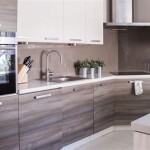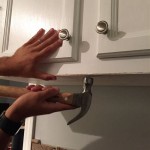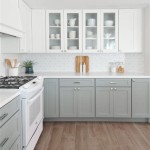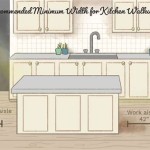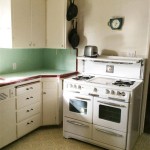Essential Aspects of Painting Kitchen Cabinets
Transforming the look of your kitchen without a full remodel can be as simple as painting your cabinets. It's a cost-effective and DIY-friendly project that can instantly update the aesthetics of your space. However, achieving a professional-looking finish requires careful preparation, the right tools, and a keen eye for detail. Here are the essential aspects to consider for a successful kitchen cabinet painting project:
Preparation:
Meticulous preparation is key to a flawless finish. Start by thoroughly cleaning the cabinets to remove grease, grime, and dust. Use a degreasing cleaner and a clean cloth to wipe down all surfaces, paying special attention to areas that accumulate grease, such as the range hood and the handles. Once the cabinets are clean, remove the doors, hardware, and any shelves or panels for easier painting.
Priming:
Priming creates a smooth surface for the paint to adhere to, preventing chipping and peeling. Choose a primer specifically designed for painting cabinets, which typically has a high adhesion and sealing capacity. Apply the primer using a brush or a roller, ensuring even coverage and allowing it to dry completely before painting.
Choosing the Right Paint:
Selecting the ideal paint for your cabinets is crucial for durability and aesthetics. Opt for high-quality, cabinet-specific paint that resists wear and tear, such as a semi-gloss or satin finish. Semi-gloss provides a slightly glossy surface that is easy to clean and withstands moisture, while satin offers a more subtle sheen that conceals brush strokes well.
Applying the Paint:
Use a high-quality brush or roller designed for painting cabinets. Apply the paint in thin, even strokes, following the wood grain direction. Start with the edges and corners, then move to the larger surfaces. Allow each coat to dry completely before applying the next. Depending on the coverage and the desired opacity, you may need to apply multiple coats.
Finishing Touches:
Once the paint has dried, reattach the cabinet doors, hardware, and shelves. Use a small brush or a toothpick to touch up any minor imperfections or nicks. Seal the painted surfaces with a clear polyurethane finish to protect them from wear and tear and enhance their durability.
Additional Tips:
- Use a paint sprayer for a smoother, more even finish.
- Sand lightly between coats to remove any raised wood fibers or imperfections.
- Allow ample drying time between each step to prevent smudging or peeling.
- Consider using a contrasting color for the cabinet doors to create a visually appealing focal point.
- Protect your floors and countertops from paint drips using drop cloths or plastic sheeting.
Conclusion:
Painting kitchen cabinets is a rewarding project that can revitalize the look of your kitchen without breaking the bank. By following these essential aspects, you can achieve a professional-looking finish that will last for years to come. Remember, careful preparation, the right tools, and a keen eye for detail are the keys to a successful kitchen cabinet painting project.

How To Paint Kitchen Cabinets

How To Paint Kitchen Cabinets Like The Pros

Step By How To Paint Your Kitchen Cabinets

Painted Kitchen Cabinets One Year Later The Palette Muse

How To Paint Kitchen Cabinets Best Color Ideas Cost

How To Paint Kitchen Cabinets Like The Pros

Durable Kitchen Cabinet Painting 10 Year Warranty Columbus Oh

How To Paint Kitchen Cabinets

7 Expert Tips For Flawless Kitchen Cabinet Painting
:max_bytes(150000):strip_icc()/DearLillieCabinets-5c64643b46e0fb0001f090ca.jpg?strip=all)
30 Painted Kitchen Cabinet Ideas
Related Posts

